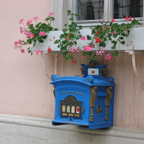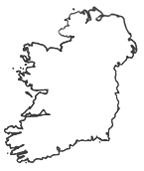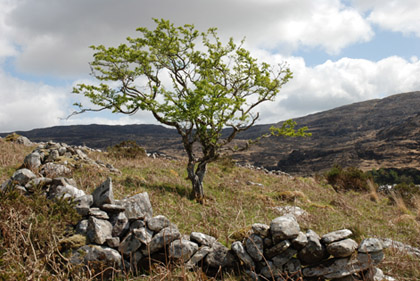Stories
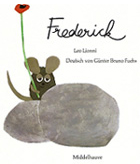
Do you know the children’s book „Frederick“
by Leo Lionni?
This book is about field mice, collecting reserves for winter - kernels, nuts,
wheat and straw. All mice work day and night. „All – but Frederick.“
The other mice wonder about Frederick and ask him why he is not working. But Frederick
replies: „I still work.“
His work was in collecting shafts of sunlight, dyes and words. With these
treasures he warmed up the heart of the other field mice when their reserves
were eaten up.
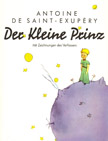
The book „The little prince“ by Antoine de
Saint-Exupéry you know for sure.
Within it the story of the little prince is reported, whose world is full
of secrets, wonder and surprises. He comes from another star to the earth
to look for a friend.
„One can only see correctly with the eyes of the heart“ is his
message to us.
A few days after the publication of this new story website (
>> originally story website) I suddenly remembered a very
remarkable coincidence in the matter of woad.
A long time before I renewed my work with woad, I tidied up the basement
room, where we keep most of our books. Meanwhile a staple with old „Manufactum“
catalogues fell into my hands. „They are still available,
the good things“ it was said in the under title of
the catalogue.
I randomly grasped in the big staple, took hold of a catalogue and opened
it anywhere. I was astonished, when I discovered that I had opened a page
with woad products.
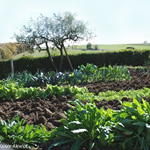
And now I would like to tell you a story about the woad
in my parents' garden:
Last winter I gave a small bag with woad seeds and some information
on woad to my mother. She told me about the development of the plantlets
again and again.
When I was in her garden the following autumn, I was really astonished
about her marvellous woad plants. She simply has "Green Fingers".
And while I was standing close to the woad and was talking to my mother,
I suddenly had the impression that on the one side I heard her words and
at the same time I received more comprehensive tips.
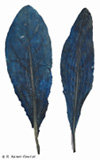
This experience was a confirmation of a vision that I already had
some time ago:
„The woad contributes to the opening up of the Third Eye.“
With our eyes we see the real things around us and with the Third Eye we intuitively
see something more comprehensive. The human energy system shows the Third Eye
in the colour of indigo.
The woad itself gives us a demonstrative cue regarding this aspect. The blue
pigment indigo is invisible in the woad – just as it is in other indigo
delivering plants as well – because it exists in a colourless preliminary
stage. The visible blue pigment indigo emerges from a transformation process.
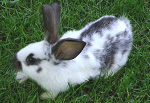
My father, who was a farmer with great devotion and enormous energy, is always
inclined to look at the practical side of things. It makes me laugh heartily
again and again, when I think of his question:
„Can one at least feed the leaves to the rabbits?“
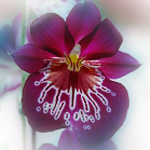
One day I drove to Christine E. Bartl, who has a very special connection to
plants – especially orchids. She is a diploma designer and photo artist
and in her pictures she presents flowers so masterly, that her creations are
not only fascinatingly beautiful, but also have a – with the aid of
scientific examinations proved – harmonizing and relaxing effect.
When I arrived at Christine’s house, the radio was playing the song:
„Indigo Girl“ . . .
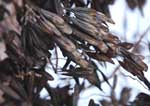
If you have pleasure with plants, I suggest you cultivate woad
in your garden.
Especially those who like to experimentalize – with a little bit of
luck – you will be able to extract the blue dye stuff >> indigo from the woad leaves.

Due to the fact that woad is biannual, the plants tiller only in the second year
of cultivation and develop – similar to rapeseed – numerous yellow
flowers. From the flowers, finally ripe fruit - mainly one-seeded, black, matt
gleam silicles with blue-violet shimmer - emerge.
As attractive new possibilities for usage of woad
I suggest also the use as dried flowers for decorative purpose.
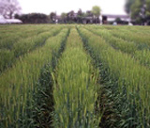
Within a selection procedure of the „Alexander von Humboldt
Foundation“ a short time after my graduation I maintained a
postdoctoral grant of the „Japan Society for the Promotion of Science“.
My host professor in Japan – an international acknowledged scientist – has
worked his whole life with barley. Once he told me, that in the evening
after finishing his work, he goes to the examination field and often
receives advice for his work there. He said: „The barley is always
whispering to us, we just have to listen.”
At that time I was very impressed and wished to be able to do the same.
During the term of my research stay in Japan I had the chance to celebrate the
new-year festival - O'Shogatsu - together with the family of my colleague. For
the great festival Yuko's mother clothed me in a kimono.
As a remembrance, a short time before my travel back home to Germany,
I sent friends and colleagues my picture in the kimono with the accompanying
text „Dozo yoroshiku onegaishimasu“ in
Hiragana, a syllabary beside Katakana. In my textbook „Japanese
for Busy People“
it is translated as „Please favour me“. In the Japanese
class I understood that it means „Please keep me in good memory“.
When Yuko saw the card, she was very surprised and said that in Japan
parents send such pictures, when they are looking for a husband for
their daughters. Oh dear, the cards had already been sent… Never
mind, other countries, other manners…
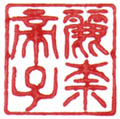
In Japan I let a „Hanko“ be drawn up. This is a personal seal that is used as a signature in Japan. My host professor selected the Kanji’s – these are from the Chinese originated characters – suitable for me. Each Kanji has a sound – a syllable – and a meaning – often even more meanings. In my Hanko the syllable of my first name RE-NA-TE – from right above to left below – and the meaning of my second name KAISER [emperor] are included. However, my host professor didn’t use – as you perhaps might think – the Kanji for TENNO, but the one for an ordinary aristocrat (left above). In addition, the sign right below is suggestive of my second name. It stands for NARA, a town close to Kyoto, which was previously the imperial centre before Kyoto and later Tokyo.
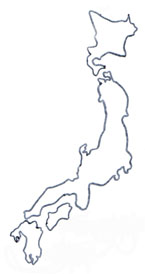
Through my work at the Kyushu University in Fukuoka, I had the chance to live
one year in Japan. At that time and also one year ago – after the visit
of a conference in Kyoto – I had the opportunity to gain comprehensive
insight in the country of the rising sun.
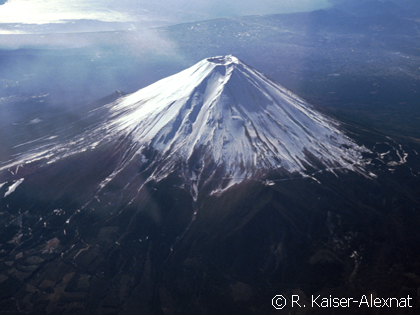

Recently I drove to a talk of Dr. Wolf-Dieter Storl entitled „Zwischen Wissenschaft und Pflanzengeistern“ [Between science and plant spirits]. The botanist discovered a completely other side of the plants beside the science. Actually I wanted to talk to him after the presentation, but by coincidence, I run across him before. I handed the flyer and silicles of the woad to him and asked him for a dedication for my book. After I reported to him that I am an agricultural scientist, he said: „Agricultural scientist? And then you read such books?“ From his mouth this sounded very funny to me, but this reminded me of the serious astonishment of a science colleague: „But Mrs. Kaiser, you are still a scientist!“ At that time my answer was: „I unify two - seemingly - very big extremes in one person.“
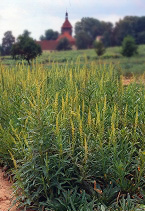
During the preparations for the „Day of the open
door“ at the Geilweilerhof – the research station
where my project on dye plants took place - sometimes I noticed a man
remained on the way to the dyer’s garden. His presence was extremely
spurring and despite extreme heat, the field work was done in a never before
experienced, complete effortlessness. My assistant was very surprised when
she came to the dyer’s garden and ascertained that I had prepared
the field alone within a very short time for the great day.
This adventure was so extraordinary that even many years later I often
thought about it. No more than before I read the book „Pflanzendevas“ [Plant-devas]
of the cultural anthropologist and ethno botanist Wolf-Dieter Storl,
I saw a possibility to explain this phenomenon and asked me if there
was a plant-deva visiting me in the dyer’s garden and had a hand
in the good success. Or was it the weld personally who gave me the force
of a power lady at that time? When I think of this, it seems not so unlikely,
because at that time the focus of my breeding work was on the yellow delivering
plant species weld and in the human energy system the colour yellow stands for
power. Powerfrau dank Färberwau? [Power Lady due to the weld?]
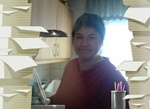
Recently I stood in the kitchen at the cooker and prepared fried potatoes with
fried egg and field salad. Suddenly my son stood in the door and took a picture
of me. As a foreground he had chosen a model with a paper staple on a desk.
He showed me the picture with the words: „This is suitable
for you mama.“
And yet a new story beheld the light of the world: While the roast
stews in the baking oven and the washing machine laps in the basement,
quick an idea for the next examination, a sentence for the next
publication or meanwhile also once again a small story typing in the
laptop on the dining table or written on a slip of paper ...

Sometimes I go to the forest to my favourite tree. When I stand on its root tillers or lean with my back on the stem, I feel within a few minutes that my head is again free and clear.
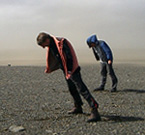
Last year I travelled to Iceland. Everyone who loves nature will share my enthusiasm
for this unique country. Barely another country brings us so intensively in contact
with the force of nature. The diversity of nature’s beauty is unlimited.
At every turn mother nature reveals– like in a treasury – wonderful
surprises.
That my encounter with Iceland was so unique, I owe to the same tourist guides
Michi and Antonia of
>> ICE-Zeit.
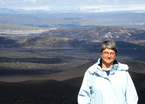
Because many Icelander believe in the existence of nature's
creatures, in this country I hoped to get a good chance to come
across elves, fairies or gnomes.
To make it short, I didn’t see nature's creatures with my eyes, even
though at some places I had the feeling that they are within grasp.

Instead on my flight back, I had the good luck to see the Snaefellsjökull - a glacier on the peninsula Snaefellsnes - in its whole glory. In its crater - according to the correspondent novel by the french author Jules Verne - the entrance for „The travel to the center of the earth“ is located.
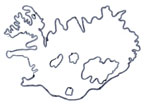
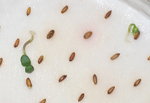
At the beginning of the year I conducted a germination test
with woad seeds laying out 50 seeds into each of three petri
dishes on wet filter paper. One day after sowing, ring-like bright-violet
crowns occurred around the seeds. While on the first day they still had an
intensive colour, they paled in the following days.
At that time I had the feeling that the woad would like to show me how I was
when I was born. Even today I often see the violet colour, when I close my
eyes.
Within a further germination test with another charge of woad seeds the violet
crown couldn’t be observed.
It is important for me to point out the woad nowadays.
In the flyer on the woad you will find information about history,
biology, cultivation, processing, and possibilities for usage of the woad.
When you sow the woad seeds and go in contact with the plants then you will
experience your own, very personal story with the woad. Simple try it. Talk
with a person while being with your woad plant. Ask quesions and be open for
the answers.
The plants can be our masters when we are willing to perceive their
gentle messages.

Similar to the title of the book „Wunderwesen Wasser“ [Wonder creature
water] of my singing comrade Dr. Marianne E. Meyer, I was considering a book „Wunderwesen
Waid“ [Wonder creature woad] with stories around the woad. Therein can
also occur your most interesting woad stories.
On the same day, shortly after noticing the idea on a story book around the
woad, I found a card - from O2 - with blue background and the white inscription „Schreiberling!“ [Scribbler!].
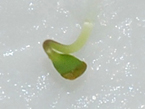
A short time before the publication of the German story website
I asked my woad plantlet, that by the way I had accidentally sowed
at Saint Wendelin, the patron of the farmers: „Do you really
contribute to the opening up of the Third Eye?“ „Of course,
what do you think?“ was its message. I had to laugh and then still
the sentence occurred: „With me you can experience something.“
For sure, from this many „woad worker“ can sing a song. „Anything
is with the woad" my colleague said. Another „woad friend“ expressed
it so: „With the woad one always experiences something.“
After I read this story to my webmaster, she said: „And my birthday
is on this day.“
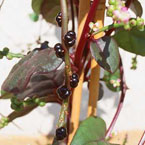
On Christmas Eve I gave the stories to my mother. After she had read everything
she showed me a plant on the windowsill in the living room. For this plant there
was – similar to all her plants – a story available:
After many years in the soil with the orchid a plantlet was germinated. My
mother planted it into an extra pot. Now the plant with its strong leaves entwined
around and still formed first flowers.
I identified the plant at the same moment, because we had grown it up within
the dye plant project in the greenhouse. It was Malabar spinach (Basella
rubra), that is used in Africa and Asia as leafy vegetables and whose red
fruit juice was used for producing make-up (rouge) and red ink for official seals.
Why did this plantlet germinate after all these years close to the orchid? The
idea to use the Japanese seal with the red ink after Christmas time as access
to the story website still occurred to me a short time before.
The herbs that „accidentally“ germinate in our garden – or
still in a plant pot – are in the German language often called Un-kräuter
[“non-herbs”]. More kindly it sounds, when they are called Bei-kräuter
[“near-herbs”]. Moreover in my eyes this designation fits
much better with its deeper meaning:
It is no accident – which herb – when – where – germinates.
Please pay attention to this.



And now – for the singers among you – still a little
German Saint Martin children’s song, that is accompanied by
pictures of the lunar-eclipse at the 03.03.2007:
Ich geh mit meiner Laterne
und meine Laterne mit mir.
Dort oben leuchten die Sterne
und unten leuchten wir.
Mein Licht ist aus.
Ich geh nach Haus.
Und die Geschichten sind aus.
[And the stories are finished.]
Come home safely ;-)

At the beginning of the new year, during a walk in the forest, a woad
story from long-ago days came into my mind:
Many years ago I was in South France for holidays with my family.
Suddenly, while driving past, I saw a flowering woad plant at the
wayside. This short meeting was enough to make me completely excited.
Within one moment I remembered that I had ceded my complete slight
collection on dye plants to Dr. Schweppe for his planned
„Lexikon der Naturfarbstoffe“ [Lexicon on natural
dyes]. After the expiration of the dye plant project I had forgotten
this completely and now – after the sudden meeting with the
woad – I became so unsettled that I called Mr. Schweppe even
from South France.
Since the understanding of the deeper meaning of the woad I know why I formerly
have reacted so extraordinarily in the matter of woad. This knowledge has clarified
the handling with the woad.

When I was leaning on my tree this morning, to find new strength, my neighbour
came along the way and asked as if understanding: „Do you find new energy
at the tree?“ I was very astonished about this knowing question, particularly
because we have never talked about such themes before. She herself is closer
to animals.
It is still not long ago and thus still quite unfamiliar that I am aware of
my contact with plants. But this meeting – so close to my most favourite
tree – gave me the courage to report to you what the woad in my garden
at least advised me:
„I am the key to all plants.“
To clarify this statement I asked my woad plant once again: “How do
you mean that?” The answer was: „It would be good, if I was everywhere.“ I
already guessed why, but to be sure I just inquired once again and its answer
was: „Because this way a bridge between humans and plants will be built.”

Being an agricultural scientist I imagine it to be good if a woad plant grows
in a garden or close to a field. If the gardener or farmer requires contacting
the woad plant, he/she can perceive the hints of his/her cultivated plants
better. This way the woad - an obviously multi-purpose useful plant - would „open
up completely new perspectives for agriculture“ (quotation of my woad
plant).
„With you I would like to improve the world!“
The whole issue could approximately function like this: The woad offers us
its support – one piece of a puzzle to let this vision become reality.

Because the quintessences of my woad plant are my hearty interest, I wanted
to open them to a broader public. Thus I asked a translator known to me, whether
he knows someone who would like to accept this task.
On that day when I received his answer, my son said during lunch: „Mama,
I have an idea. How would it be, if you built in an English flag in your homepage
and with one click on it everything appears in English.“ I asked: „And
who should translate the whole issue?“
The answer wasn’t a long time coming. The translator gave her agreement
on the same day.
Still in the same week she sent the essay
„Der Färberwaid: Eine Brücke zwischen Menschen und Pflanzen“
in the English version
„Woad: A bridge between humans and plants“.


As a scientist I would like to get to the bottom of the things. Thus I hypothesized: „If
the woad contributes to the opening up of the Third Eye, then this might be visible
with the aid of aura photography.“
And so I drove with my woad plant to the >> Lichtbildatelier
Ursula Muhn in Darmstadt to produce two aura photogrammes – one without and
one with my woad plant.
A short time before arriving at the studio a woman came towards me with an orchid.
What a nice coincidence. Christine E. Bartl had examined the effect of her orchid
pictures; this animated me to examine my woad closely in a similar way.
In the days before, I felt somewhat queasy in view of the thought that the
desired result could not come into being. But my woad plant calmed me: „You
need only bring me there, the rest I take over.“ Said, done . . .
Independent of the original question it was a great delight and verification
to see that my woad plant has such a positive effect on me and supports me
in the realization of my ideas.

Already for some time now I noticed that when I converse with someone on their
plants, they also express a lot about themselves at the same time.
In this context I ascertained that the plants reflect what
is inside us by reacting on us - similar to our domestic
animals.
The same is also valid for the picture of damage caused by diseases and pests
of our cultivated plants.
On Whit Sunday I suddenly got an exceptionally strong impulse to drive
to Weinheim to the exotic forest. On the trip home we drove via the
Gorxheim valley from the Bergstraße in direction of the Odenwald.
Suddenly I declared: „Woad!“. I barely couldn´t believe
it, but in front of our eyes a complete hillside was spread out with flowering
woad.
On a plate one could read that the artist Horst Busse from Weinheim together
with youngsters from the Carlo-Schmid-School had realized the art project „Lichtblick“ [Gleam
of hope] at this position. Later on I found out in the internet that several
hundred with iron oxid red dyed stacks, sticks, stabs and stems had been arranged
in the open space between the pedestrian zone of Weinheim and the Grundelbach
street similar to a meandering stream.
From this now nothing was to be seen anymore, because the whole hillside
had turned into another gleam of hope - a flowering woad ocean.
My son summarized the Whit Sunday experience with an eye wink: „Woad.
The Sunday is saved.“
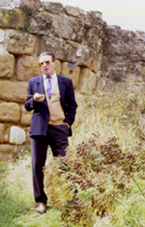
From the 3rd to the 7th June 1992 I attended the „First International Woad
Conference“ in Erfurt. At this opportunity I heard in the lecture of Patrice
Rufino, that in earlier times the woad (French: Le Pastel) had a very big economic
importance in South France in the triangle between Toulouse, Albi, and Carcassone,
which is why one talked about the „Goldenen Triangle“.
In one of the former lectures Horst Benneckenstein referred to the woad plant
and its economic-historic importance in Thuringia, whereat he highlighted,
that the woad as the “golden fleece of the country of Thuringia” in
the medieval times helped this region to wealth as well.
Because in the same year we travelled to South France, we took the
chance to make a detour to the „Route du Pastel“ and
in the „Château de Magrin“ we viewed the „Musée
du Pastel“ under the competent guidance of Monsieur Rufino.
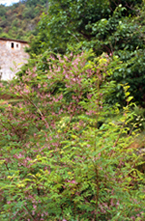
On our way through South France always new destinations, in connection
with my, at that time dye plant project, crossed my mind. To come
to the point. The „coloured“ detours had not been planned
before, but my husband and I agreed at the end of our vacation, that they
were very interesting, fruitful, and worthwhile.
And so a visit of Dominique Cardon in her solitary and adventurous accessible
house in the Cevennen must not be forgotten as well. I became acquainted with
Dominique in the frame of an international collaboration and met her in Erfurt
at the woad conference.
In Dominique`s garden there were some dye plants and I had the first chance to
see an indigo shrub. Besides that, she showed me her book, published a short
time ago, called „Guide des teintures naturelles“. In this connection
she mentioned, that she had got the „good taste of well done work“ from
her father. When I discovered her newly published work „Natural Dyes“ last
year, this sentence came back to my mind again.
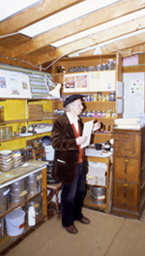
On the way back home we drove via Dornach in Switzerland, where we wanted to
visit the „Pflanzenfärberei Ernst Bollhalder“ [Dyeing Factory
Ernst Bollhalder]. Unfortunately we didn´t met Mr. Bollhalder personally.
But from the distance we could at least get an impression of the modern dyeing
factory.
The visit of Günter Meier - at that time research director of the „Pflanzen-Farben-Labor“ [Plant-Dye-Laboratory]
at the Goetheanum in Dornach – gave us insights in the usage of dye plants
for the production of wall paints. The herbal pigments were first used in Dornach
to crayon the cupola of the first Goetheanum, which Rudolf Steiner constructed
around 1920.
For wall paints with natural dyes mostly anorganic dye pigments are used.
But due to this work wall paints are also available based on plant dyes. This
is possible through a technique in which a pigment is produced with plant dyes.
In his book „Pflanzenfarben - Forschung Herstellung Anwendung“ [Plant
Dyes – Research Production Usage] Mr. Meier reports that the herbal
pigments give a lively appearance to the walls.
The synthetic dyes appear, due to their pureness only on the cone
of the retina, which explains its hardening effect. The eyes quasi
congeal through the struggle of one-sidedness. On the other hand the
plant dyes always have in each shade a tone from the complementary
area, whereby not only the cones for the colour-seeing, but also the
rods for the light-dark-seeing in the eye will work. In this manner
the eye will be broadly activated.
For months the work with the woad was a source of inspiration for me. But then
a time came, when I asked myself, whether the experiences in fact are due to
my woad plant.
Thus I took a „woad break“, in which I broke the contact to my
woad plant. To prerecord it just now, through this my life lost colour in the
real meaning of the word.
Once a day I began to uncover the neglected young woad plants in the garden
by removing the overgrown herbs around the plants.
The same morning the chief editor of the South East Asia Magazine
called me and asked, whether I would like to write an
>> article on indigo.
If this is no accident! Barely had I again turned to my woad plant, still
colour came into the game.
![Town sign of 'Waid' [Woad] in 'Weinheim' Town sign of 'Waid' [Woad] in 'Weinheim'](images/stories/39_Waidheim.jpg)
This adventure encouraged me to revive the contact with my woad plant. On the following Sunday – one day after the beginning of summer – I asked my woad plant for a suggestion to spend the day meaningfully. As answer came: „Drive to the Miramar.“ The Miramar is a water park in Weinheim. A view into the internet revealed a joyful surprise to me. The Miramar is situated at the Waidallee [Woad avenue]. But with that not enough. When we pulled into the „home straight“, it emerged, that the bath is located in a district of Weinheim called Waid [Woad].
Woad in, woad out. In the first holiday week I would have preferred
to combine our family excursion with a visit of the dyer’s
garden of the former benedictine abbey in Seligenstadt to capture
the madder flower in pictures, but I left the route to my husband.
And so we drove to the beautiful Tauber valley. Suddenly my husband
saw a sign to the „Abbey Bronnbach” and suggested we
necessarily had to look at it.
Pleasing to the eye I ascertained that here an abbey garden was supported
too. In the garden a woman was just occupied with maintenance operations.
We started up a conversation and I told her, that I would like to
take some photographs
of plants for my homepage. When she heard the keyword dye plants,
she told me that she had sowed woad at home too. Would she have said
parsley or chives – but
woad still really is a truly enthusiast plant in
our gardens.
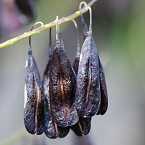
Since the quintessences of my woad plant set in my life, it is a heartfelt
concern for me, to have a share in contribution, that the bridge between humans
and plants again finds one's way into our daily life.
If you would like to cultivate the woad yourself in your garden – or
even in a flower pot – I should be pleased to send you an envelope
with woad seeds or woad silicles respectively.
>> Information
I would be very pleased if you could make use of this offer and
in the woad – similar to both stories at the beginning – not
only find colour, but also a friend.
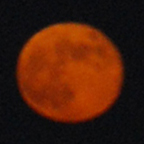
After elucidating karma at Anita Fischer from Riedenburg the path
was free to an incarnation in Egypt. That is where I had already worked with
the woad and discovered its true meaning:
The woad (Isatis tinctoria L.) is the key to the crystalline libraries where
all knowledge is kept.
The crystalline libraries include knowledge from each imaginable level that
can be of benefit at any time.
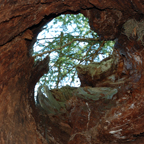
On 30.11.2008 I had the great luck to get to know Anita Fischer
personally. This was exactly the same day, when one
year ago my homepage was for the first time activated on 30.11.2007.
Again exactly the same day one year before – on 30.11.2006 –
I had an official trip in the matter of woad, and this strongly quickened
my work with the woad.
On 7.02.2009 I attended a seminar of Anita Fischer. When I
began my drive to Riedenburg the trip recorder showed the number 21 21 90 and
when I returned back home it was exactly 21:21 Uhr [9:21 p.m.]. I love
these signs „on my way“. At noon – on the way to the restaurant – to
my great happiness the song „Indigo Girl“ was playing on the radio.
At last in these temporal coincidences, I see a „concrete“ hint,
that my experiences with the woad are connected in a greater context.
One could compare it with single pieces of a puzzle, which are step
by step added to a big >> picture.
The private research project woad is therewith completed.
If you like the report
>> „Wonder Woad“ with my experiences around dye plants – especially the woad – I should be very pleased, if you would send the link to anyone interested.

Actually, the former story was intended to be the end. But then, in the Whitsunday
week, an astonishing woad adventure happened that I would like to share with you.
During an internet search on the theme
>> Human and Plant, my attention was drawn to the publication „Mensch
und Pflanze im Gespräch - Eine heilsame Begegnung“ [„Humans
and plants in conversation - A beneficial meeting“] by Anne Lohmann.
Being overjoyed about this and further
>> publications of Anne Lohmann, I sent a link of my story website to the author.
Her response – despite all the striking woad experiences – deeply
impressed even me. It emerged that her husband is Falk Fischer, the author
of the book „Das blaue Wunder Waid“ [„The blue wonder woad“].
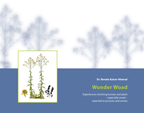
Meanwhile the actualized and added stories with my experiences concerning dye plants - especially woad - were published as book and e-book.
Renate Kaiser-Alexnat: Wonder Woad. Experiences involving human and plant – especially woad – reported in pictures and stories. epubli GmbH Berlin,
ISBN 978-3-8442-5227-9, 72 pages, 2013.
>> to the book description and ordering at the publisher
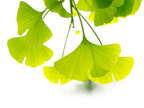
As can be seen from the stories, the topic of “Human and Plant” has been a heartfelt concern
of mine for a long time, and I have now dedicated a new web site to it.
In view of the metaphysical dimension of plants, I also enlighten my relationship with plants in small
everyday experiences on the web site “Human and Plant”.
Expressing the wisdom of the plants in this manner fills me with gratitude and pleasure.

![Woad products by 'Manufactum' [PDF 286 KB] Woad products by 'Manufactum' [PDF 286 KB]](images/stories/03_Manufactum.jpg)
![O'Shogatsu [popup with bigger picture size] O'Shogatsu](images/stories/11_Kimono.jpg)
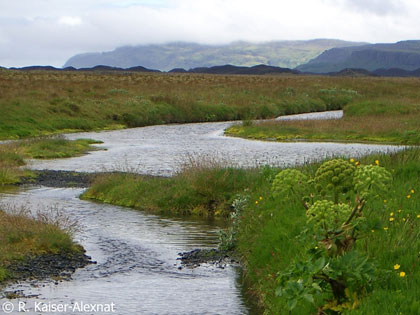
![Woad flyer | In German [PDF 1800 KB] Woad flyer | In German [PDF 2700 KB]](images/stories/23_Flyer.jpg)
![Gleam of hope [popup with bigger picture size] Gleam of hope](images/stories/34_Gleam-of-hope.jpg)
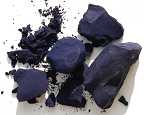
![Garden of the 'Abbey Bronnbach' [popup with bigger picture size] Garden of the 'Abbey Bronnbach'](images/stories/40_Monastery-garden.jpg)
